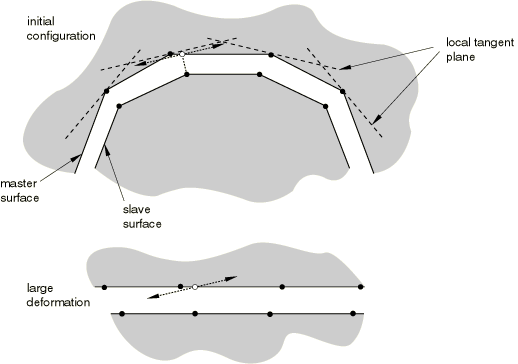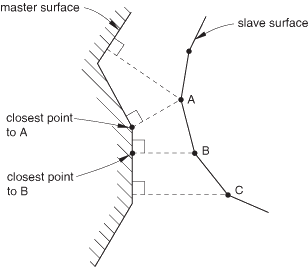

The surface normals of a surface must point toward the other surface that it may contact except when the surface is double-sided, as discussed below.Įlement-based surfaces should not be used in contact pairs if the underlying elements may fail (see “Dynamic failure models, ” Section 23.2.8, for more information). The following general restrictions (in addition to those discussed in “Element-based surface definition, ” Section 2.3.2) apply to all surfaces used in contact pairs: General restrictions on surfaces used in contact pairs The use of the small-sliding contact formulation is not supported and causes Abaqus/Explicit to issue an error message.Ĭontact will be recognized between any node on a self-contact surface and any other point on the same surface, including either side of shells or membranes (i.e., self-contact on shells and membranes is independent of the face identifier specified in the surface definition). You can reduce the contact thickness, if necessary see “Controlling the effects of surface thickness and offset in contact calculations” in “Assigning surface properties for contact pairs in Abaqus/Explicit, ” Section 36.5.2.Ī specialized finite-sliding tracking algorithm must be used. The contact thickness for self-contact should not exceed the edge lengths or diagonal lengths of the facets. By default, the contact thickness is equal to the current thickness.

The balanced master-slave contact algorithm will always be used for the contact pair (a nondefault weighting factor cannot be specified for the contact pair).Ī contact thickness must be considered for self-contact surfaces on shell or membrane elements (see “Element-based surface definition, ” Section 2.3.2) i.e., a zero surface thickness (see “Forcing zero surface thickness and offset” in “Assigning surface properties for contact pairs in Abaqus/Explicit, ” Section 36.5.2) causes Abaqus/Explicit to issue an error message. The following limitations are enforced for a contact pair with self-contact: Use sophisticated tracking algorithms to ensure that proper contact conditions are enforced efficiently Ĭan be used simultaneously with the general contact algorithm (i.e., some interactions can be modeled with contact pairs, while others are modeled with the general contact algorithm) Ĭan be formed using a pair of rigid or deformable surfaces or a single deformable surface ĭo not have to use surfaces with matching meshes Ĭannot be formed with one two-dimensional surface and one three-dimensional surface andĬannot be used for self-contact where the surface is composed of both first-order elements and second-order elements.

#Abaqus 6.14 documentation explicit contact formualtions how to#
This section describes how to define contact pairs with surfaces for contact simulations in Abaqus/Explicit.Īre part of the history definition of the model and can be created, modified, and removed from step to step (unlike Abaqus/Standard, where contact pairs are model data) See “Contact interaction analysis: overview, ” Section 36.1.1, for a comparison of the two algorithms. Abaqus/Explicit provides two algorithms for modeling contact and interaction problems: the general contact algorithm and the contact pair algorithm.


 0 kommentar(er)
0 kommentar(er)
